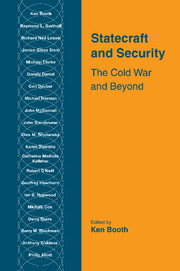Book contents
- Frontmatter
- Contents
- List of contributors
- Preface
- Introduction
- Part one Cold War: lessons and legacies
- Part two Post-Cold War: powers and policies
- 5 Can the United States lead the world?
- 6 Can Russia escape its past?
- 7 Imperialism, dependency and autocolonialism in the Eurasian space
- 8 Western Europe: challenges of the post-Cold War era
- 9 Europe and the wider world: the security challenge
- 10 A new Japan? A new history?
- 11 New China: new Cold War?
- 12 Africa: crisis and challenge
- 13 Of medium powers and middling roles
- Part three Beyond: resistances and reinventions
- Conclusion: security within global transformation?
- Index
10 - A new Japan? A new history?
Published online by Cambridge University Press: 06 October 2009
- Frontmatter
- Contents
- List of contributors
- Preface
- Introduction
- Part one Cold War: lessons and legacies
- Part two Post-Cold War: powers and policies
- 5 Can the United States lead the world?
- 6 Can Russia escape its past?
- 7 Imperialism, dependency and autocolonialism in the Eurasian space
- 8 Western Europe: challenges of the post-Cold War era
- 9 Europe and the wider world: the security challenge
- 10 A new Japan? A new history?
- 11 New China: new Cold War?
- 12 Africa: crisis and challenge
- 13 Of medium powers and middling roles
- Part three Beyond: resistances and reinventions
- Conclusion: security within global transformation?
- Index
Summary
The material future of East Asia is clear. Japan's GNP is second only to that of the United States. Even though their economic growth, like Japan's, is now slowing, Singapore, South Korea and Taiwan have also reached a high level. Others in the region, including China, are growing quickly, and those that are not are set to. Politically, however, in itself and in its implications for the rest of the world, the East Asian future is opaque. Some observers, especially in the United States, foresee a new military power, even a threat. Some, especially in Japan, see something more peaceably ‘civilian’. Some expect a less dramatic change. But no-one doubts that East Asia will be a force, and that the kind of force it will be will be determined largely by Japan.
The arguments
Self-described ‘realists’ see no reason to believe that a future that contains a rich Japan will be different. ‘For a country to choose not to become a great power’, Kenneth Waltz argues, ‘is a structural anomaly. For that reason, the choice is a difficult one to sustain. Sooner or later, the international status of countries has risen in step with their material resources. Countries with great-power economies have become great powers, whether or not reluctantly.’
- Type
- Chapter
- Information
- Statecraft and SecurityThe Cold War and Beyond, pp. 209 - 223Publisher: Cambridge University PressPrint publication year: 1998



